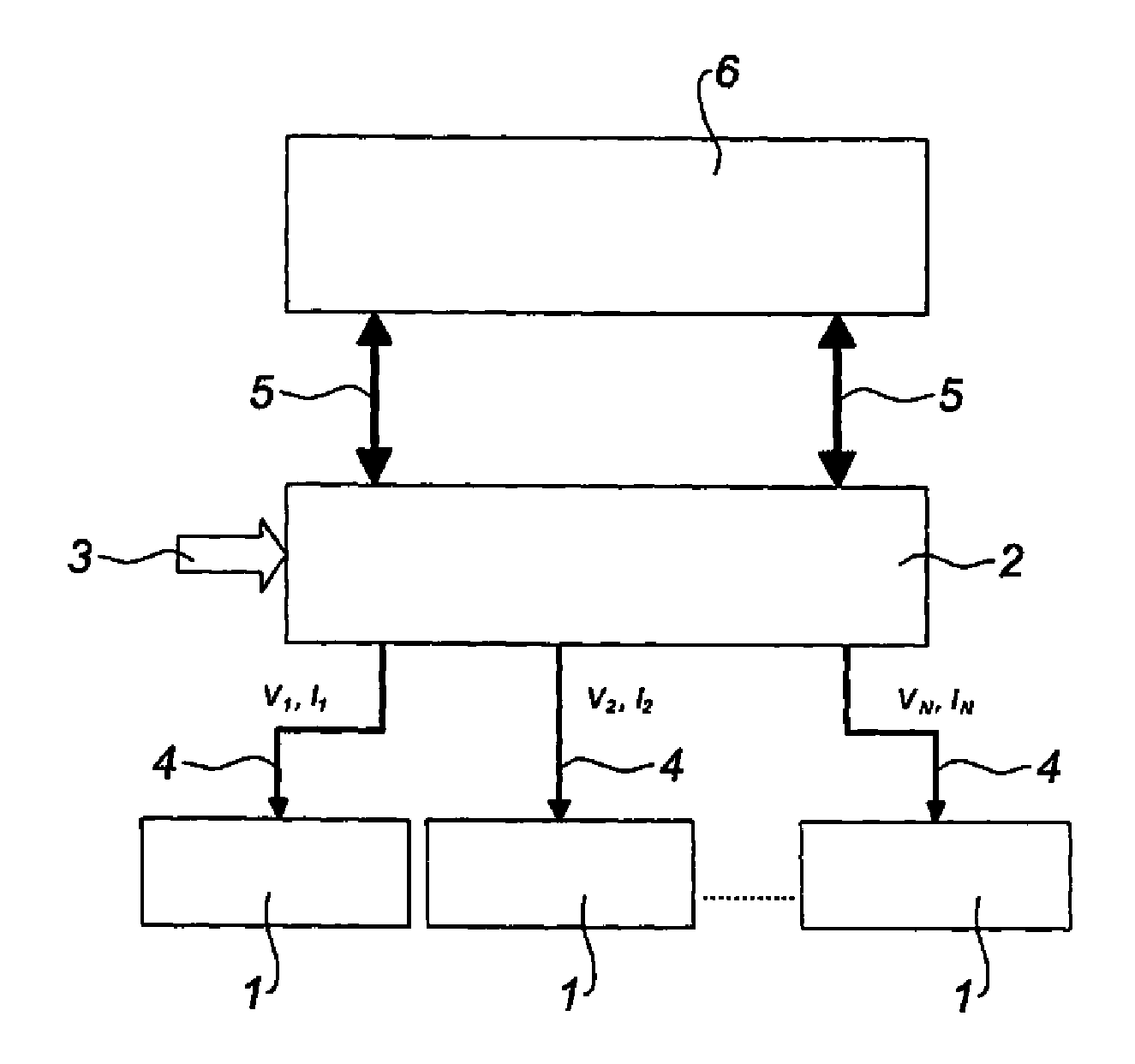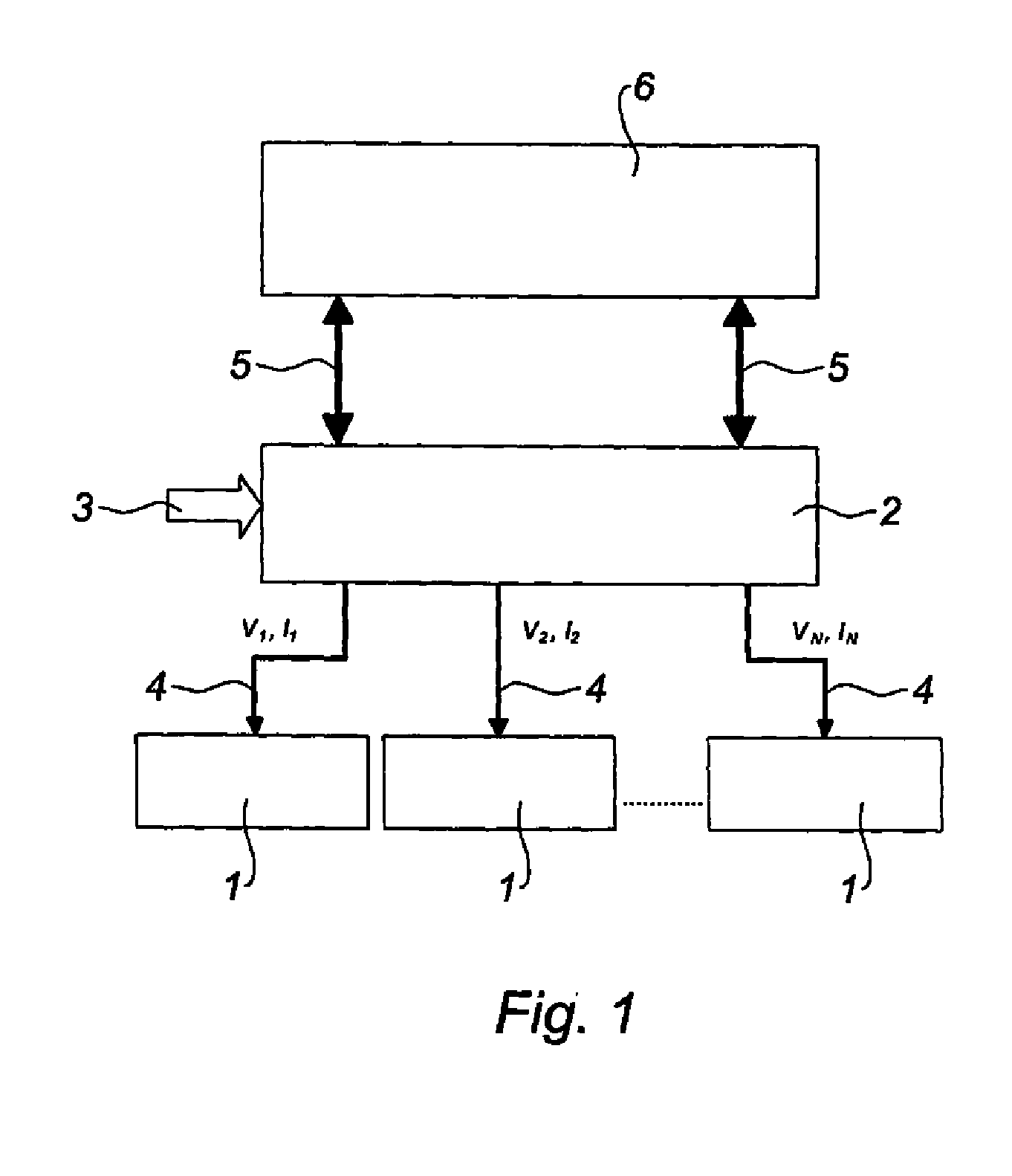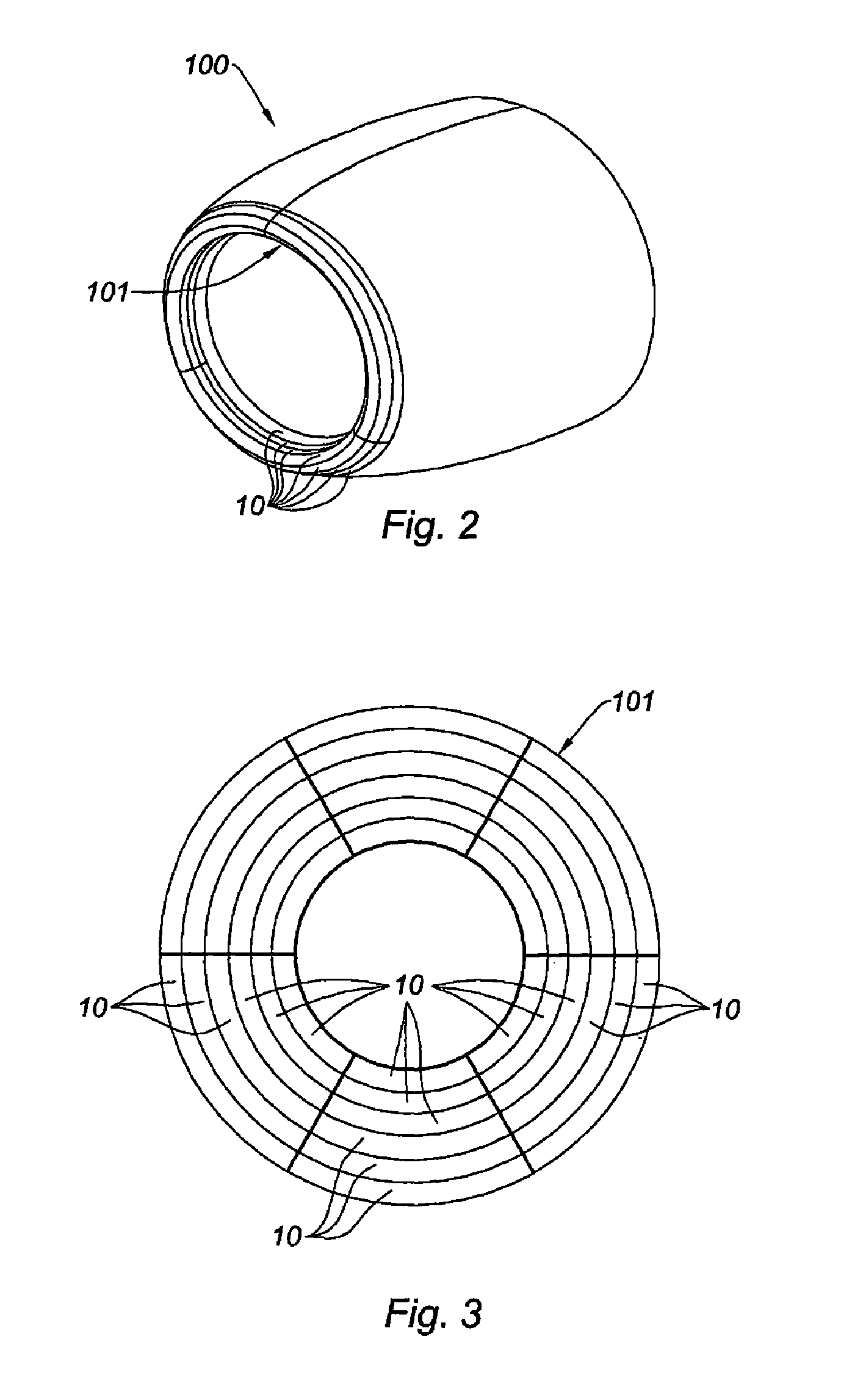Electric de-icing device and related monitoring system
a technology of electric de-icing and monitoring system, which is applied in the direction of electric digital data processing, jet propulsion plants, instruments, etc., can solve the problems of affecting the aerodynamic properties of the air intake, affecting the safety of the flight, and disrupting the air conveyance towards the fan, so as to reduce the power and avoid overheating the lip
- Summary
- Abstract
- Description
- Claims
- Application Information
AI Technical Summary
Benefits of technology
Problems solved by technology
Method used
Image
Examples
Embodiment Construction
FIG. 1 diagrams a control device of an electric deicing system of an air intake of a turbojet engine nacelle as shown in FIG. 2.
This air intake 100 is equipped with a plurality of heating resistances grouped together in heating resistant mats 10 grouped together in assemblies 1 of resistant mats 10.
Advantageously, each assembly 1 of resistant mats 10 corresponds to a specific zone of an air intake lip 101.
In the illustrated scenario, the air intake 101 is divided into six peripheral zones and six sectors and therefore includes thirty-six resistant mats 10.
The six resistant mats 10 of the peripheral zones form an assembly 1 of resistant mats over two sectors. There are therefore three assemblies 1 of twelve resistant mats 10.
The three assemblies 1 of resistant mats 12 respectively correspond to a zone situated near the inside (Int) of the air intake lip 101, a zone situated at the air intake lip 101, and a zone situated slightly upstream of the air intake lip 101.
In fact, these diffe...
PUM
 Login to view more
Login to view more Abstract
Description
Claims
Application Information
 Login to view more
Login to view more - R&D Engineer
- R&D Manager
- IP Professional
- Industry Leading Data Capabilities
- Powerful AI technology
- Patent DNA Extraction
Browse by: Latest US Patents, China's latest patents, Technical Efficacy Thesaurus, Application Domain, Technology Topic.
© 2024 PatSnap. All rights reserved.Legal|Privacy policy|Modern Slavery Act Transparency Statement|Sitemap



